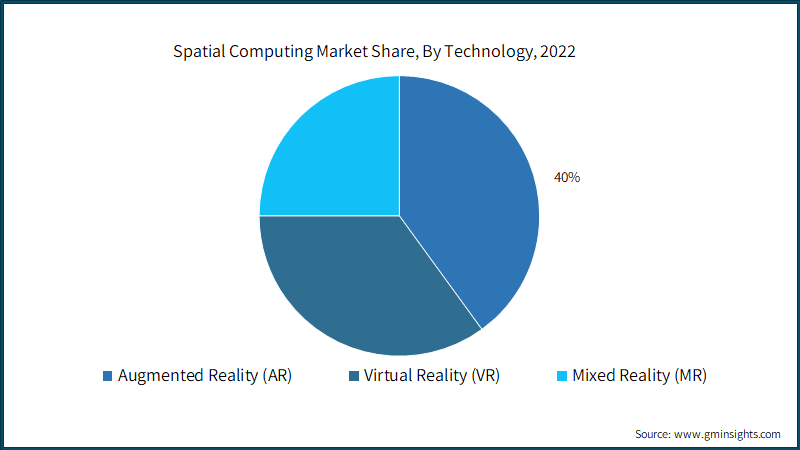Home > Media & Technology > Information Technology > Cloud Computing > Spatial Computing Market
Spatial Computing Market Analysis
- Report ID: GMI6775
- Published Date: Sep 2023
- Report Format: PDF
Spatial Computing Market Analysis
The hardware segment recorded around 45% of the spatial computing market share in 2022. Spatial computers, which seamlessly merge digital content with the physical world, are creating lucrative growth opportunities for the hardware components sector of the market. The demand for high-performance processors, advanced sensors, and immersive displays is surging as these components are vital for delivering a seamless user experience.
For instance, in June 2023, Apple introduced the Apple Vision Pro, an innovative spatial computing device that integrates digital content with the physical environment. It enables users to remain connected to their surroundings and others while offering a limitless canvas for apps that extend beyond the confines of conventional displays. This groundbreaking technology also introduces a fully three-dimensional user interface, controlled through the most natural & intuitive inputs available.

The Augmented Reality (AR) segment held over 40% of the spatial computing market share in 2022. AR studio spatial computing platforms have the potential to enhance interoperability and propel AR technology within the market. These platforms often offer standardized frameworks and tools, making it easier for developers to create compatible AR applications.
For instance, in August 2023, Rokid, a technology company specializing in human-computer interface technology, unveiled its Rokid AR Studio spatial computing platform. This innovative offering combines the Station Pro computing system with the Max Pro AR smart glasses. Through these integrated solutions, Rokid aims to immerse users in the world of spatial computing, providing them with an immersive & engaging experience.

North America spatial computing market accounted for 30% of revenue share in 2022, due to the growing technological advancements. The region is an innovation hub, with leading tech companies continuously pushing the boundaries of spatial computing hardware and software. This technological leadership fosters cutting-edge product development and attracts investment and talent, creating a thriving ecosystem for spatial computing. As a result, North America remains a leader in proliferating the adoption of spatial computing technologies across various industries and consumer markets.

